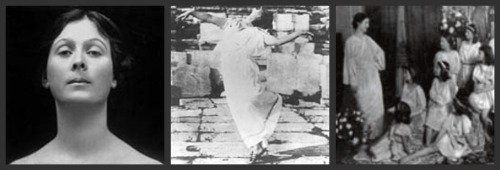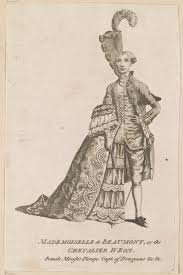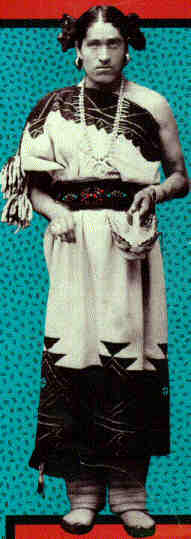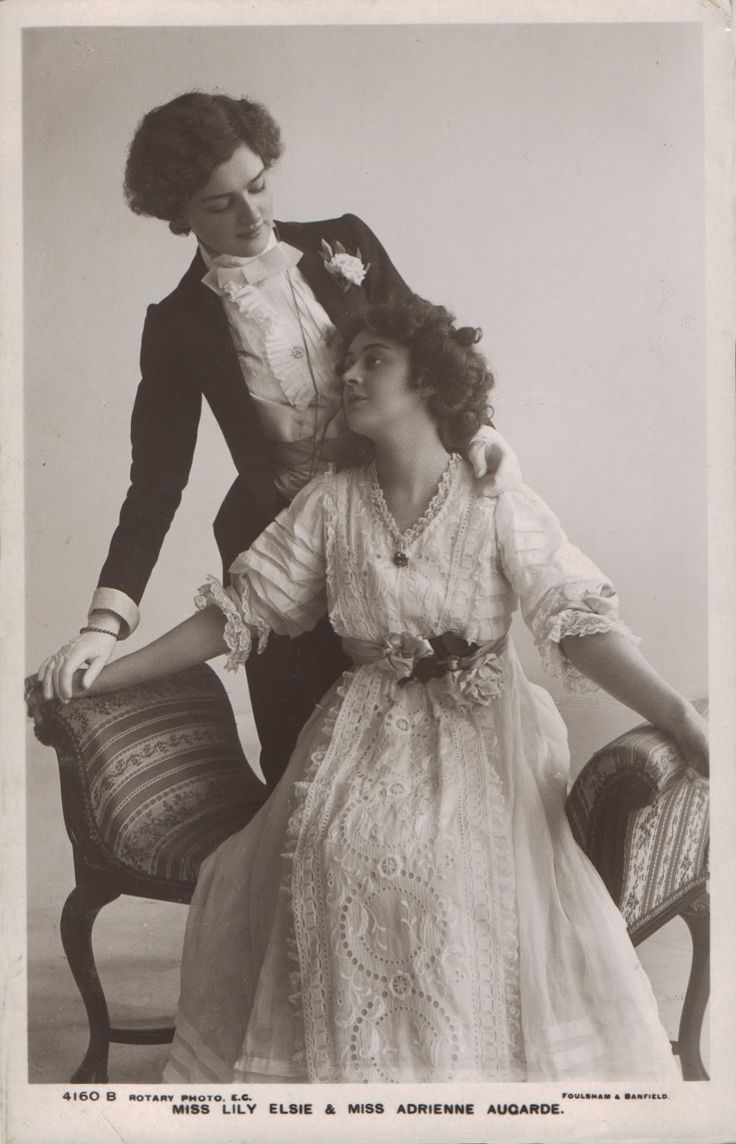This June the Molly Brown House Museum has created a Thirsty Thursday event to coincide with Lesbian, Gay, Bisexual, and Transgender (LGBT) Pride Month titled Queer in the Age of the Queen. These events are an opportunity for professionals to mingle while learning about the history of this time period. This event will take a look back at queer culture in Victorian England under the rule of Queen Victoria and here in the U.S. We are very excited to celebrate this history and provide a unique peek at the lives and accomplishments of the powerful people from this community during the late 1800s and early 1900s. It is said that for Western based culture this is the era in which sexuality itself was “invented.” Learning the historical origins of concepts surrounding gender expression and sexuality illuminates patterns in current Western society.
The Victorian period has been described as pivotal in its contribution to modern language around sexuality for Western based cultures. For many of the indigenous peoples of the Americas, it meant a radical and destructive restructuring of age old traditions around gender and sexuality through continued colonization. As attitudes and expectations around marital and intimate relationships became more strict in Victorian England, this put pressure on LGBT people living in Western cultures, as well as Native American populations. Heterosexuality was naturalized and normalized while any sexual behaviors and gender presentations outside of these parameters became labeled as deviant. In 1890 philosopher and psychologist William James went so far as to theorize that while the male repulsion of homosexuality is instinctive, cultures in which homosexuality is regularly practiced and in his view tolerated, must have only been achieved by overcoming the “natural” aversion through force of habit. James thus implies that tolerance is learned while revulsion is inborn. This is in stark contrast to the modern day movement to teach tolerance and, more ideally, acceptance, inclusion, and equality. In a 1908 cross-cultural study, philosopher and sociologist Edward Westermarck came to similar conclusion, but extended his theories to address the rejection of homosexuality by religious institutions. Westermarck linked homophobic attitudes within Christian, Jewish, and Zoroastrian religions to the historical association of homosexual practices with idolatry and heresy.
sexuality through continued colonization. As attitudes and expectations around marital and intimate relationships became more strict in Victorian England, this put pressure on LGBT people living in Western cultures, as well as Native American populations. Heterosexuality was naturalized and normalized while any sexual behaviors and gender presentations outside of these parameters became labeled as deviant. In 1890 philosopher and psychologist William James went so far as to theorize that while the male repulsion of homosexuality is instinctive, cultures in which homosexuality is regularly practiced and in his view tolerated, must have only been achieved by overcoming the “natural” aversion through force of habit. James thus implies that tolerance is learned while revulsion is inborn. This is in stark contrast to the modern day movement to teach tolerance and, more ideally, acceptance, inclusion, and equality. In a 1908 cross-cultural study, philosopher and sociologist Edward Westermarck came to similar conclusion, but extended his theories to address the rejection of homosexuality by religious institutions. Westermarck linked homophobic attitudes within Christian, Jewish, and Zoroastrian religions to the historical association of homosexual practices with idolatry and heresy.
During this period self proclaimed sexologists Richard von Kraft-Ebing and Havelock Ellis are said to have pioneered the would-be scientific study of sexuality and created categories for homosexuality and heterosexuality. This gave rise to the concept of sexual behavior as being tied to identity, a belief central in Western culture to this day. These sexologists attempted to classify sexual practices they deemed to be “normal” and “perverse.” It is pertinent to keep in mind that these are socially constructed cultural concepts. Prior to the development of these concepts and attitudes, such subjects may have been viewed more as actions and behaviors rather than identities. Thus we find sexual identity as a social construction of Western culture with its roots in the time period around the 1880s. This is by no means to imply that these sexualities and many diverse gender expressions beyond the binary system we know today did not exist, simply that they were viewed in a different light. Historian Jonathan Ned Katz has pointed out that heterosexuality too was invented as an identity concept during this time by proxy of the creation of a designation for homosexuality. Katz thus argues that homosexuality was given language as an identity before hetrosexuality. Interestingly because sexuality had not yet been constricted within the parameters by which we understand and live today, certain aspects of sexual expression and desire may have been explored in somewhat liberating terrain during the Victorian era.
One 19th century definition of queer names it as that which differs from the life-script of “opposite-sex” marriage and reproduction. Queer theory thus provides a framework which challenges the assumed opposition of homosexuality and heterosexuality. By removing the prescribed naturalism of these cultural terms one is able to examine the complexity of desire. Dr. Holly Furneaux of the University of London has argued that the homo social nature of Victorian society accommodated a wide range of queer desires as well as non-marital and non-reproductive impulses. Her research has revealed many instances in which such behaviors were viewed as acceptable and often welcomed.
Dubbed the mother of modern dance, Isadora Duncan held many of these revolutionary beliefs. Born in 1877, she lived in time with great emphasis on marital roles, yet she did not believe in marriage and had two children out of wedlock. Duncan was very outspoken about equal rights for women and was very open about her bisexuality. Florence Tobin, Margaret Brown’s niece, studied dance under Duncan in Darmstadt Germany in 1910. Florence performed dances choreographed by Duncan for fundraisers hosted by Margaret in the following years.

Isadora Duncan
Lesbian and bisexual acts of women were fairly common and they were not illegal. In 1885 male homosexual acts, even those conducted in private, were criminalized and severely legislated against by the introduction of the Labouchere Amendment. Those convicted of sodomy, or buggery as it was called, suffered years of imprisonment with hard labor and abuse meant to break the spirit or were sentenced to death. Historian Mike Dash ventures that the authors of the amendment may have excluded the subject of lesbianism for fear of alerting more women to the possibility. Dash further explains that a 1977 demonstration in support of lesbian visibility that took place at a statue depicting Queen Victoria gave rise to the legend that she had removed lesbianism from the 1885 amendment on the false belief that such sexual acts were impossible.
The Labouchere Amendment of 1885 lead most notoriously to the imprisonment of the famous playwright, author, and aesthetics lecturer Oscar Wilde. Although Wilde had been married with children and had worked to conceal his intimacies with men, the stress caused by the pressure to conform had begun to wear on him. In 1891 Wilde entered into a relationship with Lord Alfred Douglas, son of the Marquess of Queensberry. Within ten years of having an only gay relationship Wilde would be dead as a result of the homophobic backlash. Douglas, or Bosie as he was often called by friends, refused to hide his relationship with Wilde despite his father’s violent and irrational hatred for him. In a 1894 letter to his mother Bosie wrote “You cannot do anything against the power of my affection for Oscar Wilde and his for me.” In his rage Queensberry attempted to disrupt the opening night of one of Wilde’s plays. The Marquess continued to aggressively harass Wilde until he filed a suit against Queensberry for criminal libel. Queensberry countered with charges of “acts of gross indecency” accusing him of the illegal act of sodomy, citing the Labouchere Amendment. Wilde was sentenced to two years hard labor during which he suffered physical abuse which lead to his early death at the age of forty-six. Although Wilde lived for three years following his release from prison, he was never the same and struggled to rekindle his creative spark.

Oscar Wilde
Prior to his involvement with Bosie and the resulting imprisonment, Wilde had gone on several lecture tours throughout the U.S. with the mission to make the “artistic movement the basis for a new civilization.” The author David M. Friedman writes that “Wilde gave 150 lectures, including four in Colorado, on interior decorating, singing the praises of sconces and embroidered pillows while wearing satin breeches, silver-buckled pumps, and a snug velvet coat, his face dusted with powder and a hint of rouge.” In April of 1882 Wilde visited Leadville where he spoke at the Tabor Opera House. During his visit he was lowered in a bucket to the bottom of one of Horace Tabor’s mines. Wilde wrote of the event “I of course true to my principle being graceful even in a bucket.” It is said that he dined, drank whiskey and smoked a cigar. “Then I had to open a new vein, or lode, which with a silver drill I brilliantly performed, amidst unanimous applause. The silver drill was presented to me and the lode named “The Oscar.” I had hoped that in their simple grand way they would have offered me shares in “The Oscar,” but in their artless untutored fashion they did not. Only the silver drill remains as a memory of my night at Leadville.” When touring back in England, Wilde recalled a memory of Leadville involving a sign posted in a bar which read “Please do not shoot the pianist, he is doing the best that he can.” Wilde explained “I was struck with this recognition of the fact that bad art merits the penalty of death, and I felt that in this remote city, where the aesthetic applications of the revolver were clearly established in the case of music, my apostolic task would be much simplified, as indeed it was.”
To lose such a talented individual who had contributed so much to the world of art and literature because of homophobic attitudes was truly a tragedy. Let us not forget that many other lives were lost as a result of similar laws and beliefs. The Labouchere Amendment of 1885 was not repealed until the introduction of the Sexual Offences Act of 1967 which only partially decriminalized homosexual behaviors. The originally named offences remained officially on the books until the Sexual Offences Act of 2003.
In the United States Thomas Jefferson proposed a law in Virginia that would have made sodomy punishable by castration, which was considered a liberal approach considering that the practice had been to put those accused of homosexual behavior to be put to death. Jefferson’s law was rejected by the Virginia Legislature. Up until 1962 sodomy was considered a felony in every state punishable by lengthy imprisonment, or a life sentence often with hard labor. Homosexuality had been officially classified as an illness until 1973. While the various states have gone back and forth with laws regarding “same-sex” rights, “same-sex” sexual activity was not made legal on a national level until 2003. Transgender was not declassified as an illness until 2012. Although “same-sex” marriage was made legal on the national level in 2015, many states and groups are actively fighting against this measure.
 The designation of “same-sex” and “opposite-sex” are put in parenthesis to address the assumption of a binary gender system in which male and female exist in polarized terms. Western culture has not always adhered to a strict binary. French spy and diplomat Chevalier d’Eon who was born in 1728 had very fluid gender expression. After spending nearly half of her life presenting in masculine clothes and identifying as a man, Chevalier began appearing in Queen Elizabeth’s court dressed in feminine clothes and requesting recognition by the French government of her identity as a woman. Transgender people struggled to be recognized and respected.
The designation of “same-sex” and “opposite-sex” are put in parenthesis to address the assumption of a binary gender system in which male and female exist in polarized terms. Western culture has not always adhered to a strict binary. French spy and diplomat Chevalier d’Eon who was born in 1728 had very fluid gender expression. After spending nearly half of her life presenting in masculine clothes and identifying as a man, Chevalier began appearing in Queen Elizabeth’s court dressed in feminine clothes and requesting recognition by the French government of her identity as a woman. Transgender people struggled to be recognized and respected.
Those who biologically did not fit into the prescribed binary or who displayed different biology, such as intersex (formally known as hermaphrodites) were at great risk, and still suffer many hardships within society today. The case of Sophie V. documented in the early 1880s of France exemplifies the dangers of having a body that does not conform to the biological expectations of doctors. When Sophie’s parents took her to a physician to address questions about her sex at birth surgery was suggested. Sophie’s parents thankfully refused for fear that the doctor would accidently harm, mutilate, or even kill her. Sadly many non-consensual and rather damaging sex reassignment surgeries have been performed on intersex people.
In the Americas the cultures of the indigenous people were much more diverse. Many tribes have complex language to include multiple genders and sexualities. While each tribe has their own unique terminology, two spirit has become term to denote a Native American who feels they have multiple genders within them. Maintaining these traditions was very difficult during the 1800-1900s due to the dynamics occurring in Victorian society being imposed through colonization. Many of these people were violently forced to assimilate by missionaries, boarding schools, and the U.S. government.
Even so there were many notable two spirit people throughout history. An Apache known

We’wha
as Lozan born in the 1840s was said by her brother to be “strong as a man, braver than most, and cunning in strategy, Lozen is a shield to her people.” Lozan worked as a prophet and a healer. Along with her companion Dahteste, Lozan acted as a mediator between the U.S. Army and Geronimo’s band until she was taken prisoner and died of tuberculosis. One of the most famous two spirit people, or ihamana in her tribe’s language, was We’wha of the Zuni. Born in 1849, We’wha acted as a cultural ambassador for her people and met with President Grover Cleveland. While two spirit people once held prominent positions within their tribes, many struggle for recognition and inclusion in current times due to the destruction of traditions through continued colonization.
There was great diversity in expressions of gender and sexuality during the 1800 and 1900s in Victorian England and among the many cultures and tribes of the U.S. As pressures from religious institutions and governments lead to the creation of laws against homosexual practices, homophobia began to increase. Many roots of anti-LGBT sentiments may be traced to this time period. If we can learn from what we have lost in these repressive reforms, we may evolve beyond prejudice and forced assimilation to literally save lives and build a brighter future for all people.
Written by Savannah Dawn Powell, Collections & Programming Volunteer

